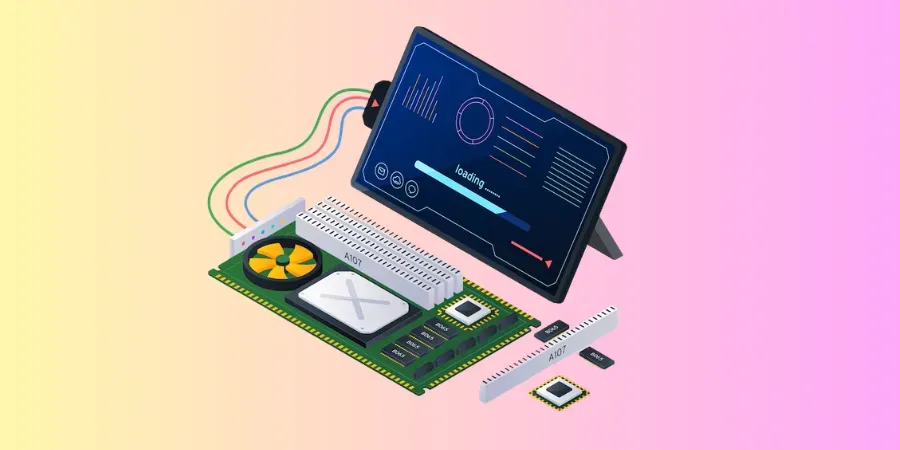
Computers are a huge part of everyday life in the 21st century. As the technology behind these devices has improved, they’ve become more powerful and more complex. However, not every computer needs to be a fancy, high-powered machine.
While standard personal and desktop computers are suitable for a wide range of tasks, some tasks require less computing power. This is where the single board computer comes in.
A single board computer (SBC) differs from a standard PC in that it only features a single circuit board. This contains the memory, input/output, microprocessor and other features necessary for computing. However, it doesn’t rely on multiple expansions for other features. This means it’s significantly cheaper, and while the SBC tends to have less power, they come in a variety of different capabilities.
A Brief History of Single Board Computers
The origins of single board computing can be traced back to the early days of microcomputing in the 1970s. The first true SBC was the MITS Altair 8800 which was released in 1975. Based on the Intel 8080 processor, the Altair 8800 came as a kit that had to be assembled by the user. It allowed hobbyists to have access to an affordable personal computer for the first time.
In 1977, the Apple II became one of the first pre-assembled single board computers to achieve mass market success. The 1980s saw the rise of SBCs based on 8-bit microprocessors like the Commodore 64 and ZX Spectrum. These were low cost home computers used mainly for gaming and basic programming.
The 1990s brought IBM PC compatibility to the SBC market with products like the 386EX embedded processor board. More powerful 32-bit SBCs also became popular in industrial applications during this period. The 2000s saw a proliferation of ARM-based SBCs such as the Raspberry Pi and BeagleBoard. High performance SBCs based on 64-bit multi-core processors are now common.
Advantages of a Single Board Computer
The main advantage of the SBC is that it’s cheaper as it features far fewer circuit boards, connectors and driver circuits. This also means that it’s faster to produce, making it suitable for a wide range of uses. The OKdo ROCK is one of the most popular single board computers, with excellent functionality and reliability while also being highly cost-effective.
The size and weight of the SBC is another major advantage. For some applications, internal space might be limited, and weight can be an important factor. In these cases, an SBC makes a lot more sense compared to a standard desktop computer, allowing a process to function without being too heavy.
While SBCs are often slower and more limited compared to standard PCs, they still provide enough computational power for a variety of uses and come in a wide range of capacities. In addition, they’re normally used to control simple processes, so a large amount of power is not necessary.
Uses for Single Board Computers
The best uses for SBCs are in embedded applications where they can control specific processes within a system. For example, they’re used for complex robotic systems in place of microcontrollers. Here are some examples of how they can be used.
- Education - SBCs like the Raspberry Pi and Arduino are very popular in schools and colleges to teach STEM subjects. Students can learn programming, electronics, and robotics by creating hands-on projects with these boards. The low cost and flexibility of SBCs allow the implementation of innovative ideas.
- DIY & Hobbies - Enthusiasts, hobbyists and makers use SBCs to build an endless variety of unique projects. These include smart home automation with voice assistants, weather stations that upload data to the cloud, drones and remote control vehicles, gaming consoles and so on.
- Industrial Automation - Rugged, compact SBCs are widely used in manufacturing facilities, power plants, oil rigs and other industrial environments. They can monitor systems, collect sensor data, control equipment and automate processes.
- Edge Computing - Mini-server SBCs like UP Squared are ideal for edge computing applications where localized processing and analytics are required. They act as small servers in retail stores, warehouses, oil rigs etc.
- Embedded Systems - Wearables, medical devices, point of sale systems, robots and IoT systems extensively use embedded SBCs. The boards provide processing power in a compact form factor.
- Networking Appliances - Appliances like routers, firewalls, and VPN gateways that enable business networking often utilize SBCs. Device management and monitoring can be done more efficiently.
- Multimedia Centers - Home entertainment systems and multimedia centres for playing videos, music, streaming media and gaming employ SBCs for their high graphic capabilities.
Single board computers pack the capabilities of a PC in compact, energy-efficient and cost-effective devices. Their versatility enables applications across education, DIY projects, industrial systems, medical devices and high-end computing like AI.
With a vast range of SBCs now available, the right board can be chosen based on computing power, features and form factor required. SBCs will continue to play a major role in the future of smart, connected computing.